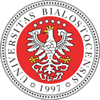Proszę używać tego identyfikatora do cytowań lub wstaw link do tej pozycji:
http://hdl.handle.net/11320/10034| Tytuł: | Воспроизводимость сетевых фразеологизмов – универсальное и национальное |
| Inne tytuły: | Reproducibility of Internet idioms – universal and national |
| Autorzy: | Тарса, Ядвига |
| Słowa kluczowe: | воспроизводимость сетевой фразеологизм Интернет универсальное национальное |
| Data wydania: | 2020 |
| Data dodania: | 12-sty-2021 |
| Wydawca: | Wydawnictwo Uniwersytetu w Białymstoku |
| Źródło: | Frazeologia a reprodukowalność w teorii i w praktyce komunikacyjnej: problemy - metody analizy - opis, editors Wojciech Chlebda, Jadwiga Tarsa, Białystok 2020, s. 133-143 |
| Seria: | Intercontinental Dialogue on Phraseology;6 |
| Konferencja: | Międzynarodowa Konferencja Naukowa EUROPHRAS2018: Reproducibility from a phraseological perspective: Structural, functional and cultural aspects, Białystok 10-12 września 2018 |
| Abstrakt: | Статья посвящена выявлению и описанию универсального и национального в воспроизводимости сетевых фразеологизмов. Автор статьи делит сетевые фразеологизмы на три группы: а) фразеологизмы, которые или воспроизводятся в исходной форме (т.е. на английском языке), или являются кальками с английского языка, б) фразеологизмы, которые не являются кальками английских выражений, они возникли независимо в разных сегментах Интернета, отличаются планом выражения, но у них одинаковый план содержания, воспроизводятся в них одинаковые смыслы, в) фразеологизмы, функционирующие только в определенном сегменте Интернета. This article discusses the problem of idioms reproducibility on the Internet. The Author tries to define internet idioms, answering the question which of them have the biggest chance of becoming known by almost all Internet users and which will remain only an item of comunication in the national Internet segments. The research has proved the thesis claiming that idioms which have appeared in an English-speaking environment have the biggest chance of entering the lexicon of the wide range of users. They can be found in various segments due to the fact that than in most cases they are the verbal part of demotivators. Generally, they are used in the source language or they are calqued. The second group of idioms are such units which are not the English language calques, they have appeared autonomously in the different segments of the Internet, they vary in their figurativeness but their meaning is the same. The third group is formed by idioms characteristic for one segment of the Internet for they relate to the events, realities and statements of various people connected with a given country. The conducted analysis has also proved that Internet idioms, regardless of their origin, mirror the carnivalisation of Internet communication. |
| Afiliacja: | Опольский университет, Польша |
| URI: | http://hdl.handle.net/11320/10034 |
| ISBN: | 978-83-7431-643-9 |
| metadata.dc.identifier.orcid: | 0000-0002-4381-2637 |
| Typ Dokumentu: | Book chapter |
| Właściciel praw: | © Copyright by University of Bialystok, Białystok 2020; |
| Występuje w kolekcji(ach): | Książki / Rozdziały (WUwB) Międzynarodowa Konferencja Naukowa EUROPHRAS2018: Reproducibility from a phraseological perspective: Structural, functional and cultural aspects, 10-12 września 2018 |
Pliki w tej pozycji:
| Plik | Opis | Rozmiar | Format | |
|---|---|---|---|---|
| J_Tarsa_Vosproizvodimostʹ_setevyh_frazeologizmov.pdf | 384,12 kB | Adobe PDF | Otwórz |
Pozycja jest chroniona prawem autorskim (Copyright © Wszelkie prawa zastrzeżone)

